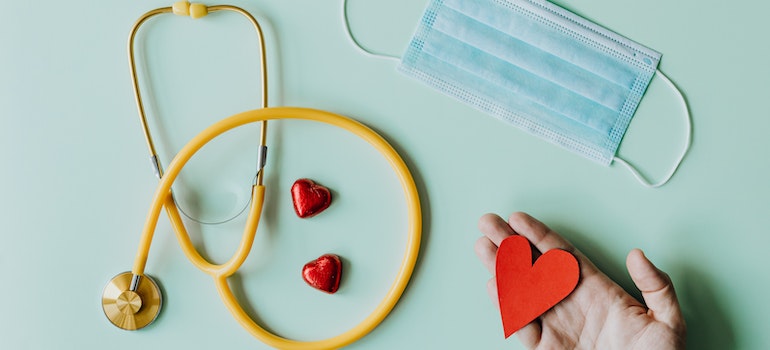Diseases Caused by Alcohol: Curable & Chronic
Alcoholism is one of the sneakiest addictions of the modern age. Drinking can be an initialization ritual to the world of adults, it can be a part of different cultures… Some perceive alcohol as a cure. However, alcohol can cause several serious disbalances in the organism, especially if consumed frequently and in great amounts. There are many diseases caused by alcohol, both curable and chronic. There are many negative consequences of drinking and our experts in the rehab center in Pennsylvania are here to help you shed some light on them.
Jump to Section
It’s not ‘just a drink’
Even though we often see alcoholism as a soft disease on the spectrum of addictions, this is definitely not the case. Chronic disease and acute illness have been seen in varied degrees among heavy drinkers. Mortality from alcohol consumption is higher than that from smoking and far higher than that from illicit drug use on a global scale, placing it on a level with malaria and unsafe sex. With these figures, drunkenness has surpassed even the most pressing public health issues. Death rates are 2.5 times higher than average among drinkers.
As compared to moderate alcohol use, heavy smoking is estimated to cut life expectancy by around 8 years. Up to a quarter of all people admitted to general hospitals in the United States are active alcoholics. As our experts at the alcohol rehab center Newburgh NY say, it’s more difficult to quantify the scale of the social and psychological illness connected with alcoholism, but it is vast. The number of people hospitalized due to alcohol-related depression and personality disorders is likely high.
What happens when you’re ‘under the influence’?
Alcohol does not cause diseases the same way viruses or other microbes do. The only immediate consequence you can see is a syndrome well known to all of us – the way you behave when you’re ‘under the influence’. What does that mean in terms of your bodily functions? Alcohol enters your gastrointestinal tract when you drink it. It passes your stomach and you start absorbing it in your small intestine.
Then, when it enters your bloodstream, it reaches all the cells and organs in your organism – pancreas, heart, brain… Since it’s not a molecule that your cells normally use for their metabolism, it acts as a sort of poison to each of them. It’s important to note that alcohol transfers the blood-brain barrier and it starts damaging neurons that are extremely sensitive to them. It influences your centers for balance, memory, and speech in a great manner – and that’s why you behave a certain way when you are ‘under influence’.

Liver – the quiet soldier
Luckily, your sweet poison finds its way to your liver. This important organ binds certain molecules to alcohol, inactivates it, and prepares it for extraction from your body. In other words, it does an important job of detoxication, and it does it very well, which is why people are able to drink alcohol in small amounts without deadly consequences.
The liver is the primary site of alcohol metabolism and elimination from the body. When we drink, the ethanol in the alcohol travels via the blood to the liver. Enzymes perform a two-step breakdown of alcohol in the liver:
- The enzyme alcohol dehydrogenase (ADH) is responsible for the harmful breakdown of ethanol into acetaldehyde.
- The enzyme aldehyde dehydrogenase subsequently converts the acetaldehyde to acetate (ALDH). Toxin-free acetate decomposes into harmless carbon dioxide and water.
Everything has its limits
The liver can only digest so much alcohol each hour, and that limit isn’t infinite. When people consume more alcohol than their liver can process – alcoholic intoxication happens. The liver’s critical involvement in detoxification extends well beyond its role in metabolizing alcoholic beverages. For example, Kupffer cells are specialized liver cells that serve as a filter. They clear the blood of poisons and other hazardous chemicals.
The liver’s ability to metabolize and excrete ethanol is essential to the detoxification process. However, if the consumption of alcohol goes above a certain limit in terms of frequency as well as the amount – there will be consequences that even the liver can’t clear up.

Your neurons suffer short and long-term
In the neurological system, neurons are the fundamental building blocks, and alcohol may have profound impacts on these cells. Neurotransmitters are chemical messengers that allow neurons to interact with one another. Once alcohol enters the brain, it alters several of these messengers. This commonly used substance acts like a hurricane in the calm sphere of neurons and neurotransmitters (aka your brain).
Lower brain activity and neuron inhibition
Alcohol is CNS depressive substance. That means that it reduces the speed with which your brain and spinal cord are working. It lowers brain activity by inhibiting neurons by increasing the activity of gamma-aminobutyric acid (GABA). GABA is the most potent inhibitory neurotransmitter in the human brain. Have you noticed how people tend to have slurred speech and diminished coordination when they’re under influence? That’s because of the interaction between GABA and alcohol in the brain. Impaired motor skills are extremely dangerous when it comes to operating vehicles. That’s why it’s important not to drink and drive.

Less communication between cells – more confusion
Furthermore, alcohol interferes with intercellular communication. Alcohol may disrupt the function of neurotransmitters like glutamate, the major excitatory neurotransmitter in the brain. Glutamate is also important in learning and memory because it helps create quality communication between neurons. Now, alcohol reduces excitatory activity in the brain by inhibiting glutamate. So, not only does it slow down brain functions, but it also makes it harder for your neurons to make connections. At high enough dosages, this may induce confusion and memory loss.
Imagine this – it’s the morning after the party, and you’re hungover. Your friends are telling you about the things that you’ve done last night, but you don’t remember a thing. Sounds familiar? If yes, that means that you have experienced the interaction between alcohol and glutamate and its effects on the brain firsthand.
The impact on the reward system
The most underrated interaction of alcohol in the brain is between it and the reward system. This is especially important to us, and our experts at alcohol rehab Princeton NJ occupy with this subject every day. The reward system in the brain is a complex made out of the ventral tegmental area and nucleus accumbens. These two together make a so-called mesolimbic dopamine pathway.
Food, sex, narcotics, and other rewarding activities all stimulate the mesolimbic dopamine pathway. In response to these cues, the ventral tegmental area (VTA) secretes the neurotransmitter dopamine into the nucleus accumbens (NAc). This sets off a chain reaction of neuronal activity that ultimately results in a pleasurable or rewarding experience.

The major influence on addiction development
The nucleus accumbens (NAc), commonly known as the “pleasure center” of the brain, has connections to regions of the brain that are critical for learning, memory, and motivation. Because of these associations, we are more likely to repeat the actions that lead to the positive outcomes we have previously experienced.
Dopamine is important in developing an addiction because it is released in the brain’s reward center. Substance abuse may alter the brain’s reward circuits, making the user more predisposed to seek out and engage in more substance use. This is due to the brain’s association of the chemical with the rewarding rush of dopamine from the reward center. Alcohol’s impact on the brain’s reward system has been a part of very important discussions in medical society. Changes in the brain’s reward circuits that result from chronic alcohol use are linked to both addiction and cravings.
Alcohol kills neurons slowly
After all these interactions with neurotransmitters, we must mention a direct and deadly interaction between a cell and this substance. Heavy and prolonged alcohol usage takes a great toll on neurons. It acts toxic and, as soon as its defense mechanism fails, this interaction results in neuronal damage and death. The hippocampus, an area crucial to memory and learning, and other crucial brain areas may undergo serious atrophy as a result. If you struggle with this type of problem, the inpatient alcohol rehab Pennsylvania program might be just the right thing for you.

Other organ systems are affected as well
The cardiovascular system suffers a lot when alcohol is involved. Increased heart rate, elevated blood pressure, and an irregular heartbeat are some of the cardiovascular effects of alcohol. Chronic alcohol misuse also has a major contribution to an increased risk of cardiovascular disease.
Drinking too much alcohol may have negative effects on other organ systems as well, including the digestive system (leading to nausea, vomiting, and diarrhea) and the respiratory system (leading to delayed breathing and, in severe instances, respiratory failure). In general, the central nervous system (CNS), the liver, and the cardiovascular system are the systems most typically damaged by alcohol use.
Curable diseases caused by alcohol
When you go above the limit of the recommended amount of alcoholic beverages, but not the limit of frequency, it can cause curable diseases. However, just because something is ‘curable’ doesn’t mean that it won’t be dramatic or/and even deadly. It just means there’s a chance of curing it, with the right means at the right time.
Drinking too much in a short time can cause various health problems:
- nausea
- vomiting
- headache
- memory loss
- narrowing of consciousness
- coordination problems
Now, the things we mentioned in the list above are all part of most people’s experience. We’ve all been there and the cures vary from sparkling water to aspirin. But, these acute negative influences on different cells in your body can further cause traffic accidents, violence, or unwanted sexual behavior.
All of this continues the chain and creates a risk of serious injuries and blood loss, amputations, or, on the other hand, serious STDs. Although curable (some more than others), all of these problems are indirectly linked to the alcoholic state.

Injuries due to abuse
Abuse of alcohol may impair your ability to make sound decisions and slow your reflexes, both of which can lead to major accidents. There are a lot of ways in which excessive drinking might cause serious injuries, that can end up in major blood loss or even amputations.
Impaired driving is a major danger associated with excessive alcohol use. Due to impairments in judgment, response time, and coordination, driving while under the influence of alcohol is risky. Because of this, the driver, passengers, and other motorists are all in higher danger of being involved in an accident or suffering an injury.
Neuronal aspects play a major role
Misuse of alcoholic beverages also raises the danger of accidental falls and injuries. Coordination and balance impairments increase the risk of falls and other mishaps that may result in severe injuries because of the increased difficulty in navigating one’s surroundings. Also, misusing alcohol raises the chance of violent conduct and changes how aggressiveness and danger are perceived. Fighting and other violent interactions are possible outcomes of this, giving major injuries as a result.
In situations like these, our patients face major concerns about how much insurance coverage will they get for their injuries. However, it’s better to consider stuff like does Cigna cover alcohol rehab as a form of prevention, because the medical bill for these types of injuries tends to be ruthless.
Self-harm, whether accidental or on purpose (such as attempted suicide) is more likely in those who drink excessively. This may be because of the way alcohol alters a person’s disposition and sense of judgment, in addition to the elevated risk-taking behaviors that often accompany excessive alcohol use.

STDs
The intoxicating effects of alcohol may cloud a person’s ability to think clearly and make responsible choices, including those involving sexual conduct. This may lead to sexually hazardous behavior like having sex without protection or having sex with several partners, both of which can raise the probability of contracting a sexually transmitted disease.
Since it lowers inhibitions, alcohol might lead to sexually dangerous conduct that a person would avoid while sober. As a result, people may be more prone to engage in unsafe sexual behaviors. When a person consumes alcohol, their sexual desire and arousal may grow, prompting them to have more sexual encounters. As a result, STDs bloom.
This particular indirect influence of alcohol on your health can be both curable and chronic – depending on which STD is involved. Some can be solved with a few antibiotics (like gonorrhea), but others present a great threat to the whole organism (HIV in particular).

Curable, but life-threatening
Even when we take out the indirect effects, the list of serious (but curable) health issues directly caused by alcohol is not exactly short. Alcoholism can lead to the following:
- delirium tremens
- alcoholic psychosis
- alcoholic hepatitis
- alcoholic fatty liver disease
- acute gastritis
- cardiomyopathy
- hypertension
- acute pancreatitis
Delirium tremens is a serious acute state that comes as a withdrawal syndrome after heavy drinking for a long time. A person is trembling, sweating, vomiting, and being aggressive but simultaneously has a significantly narrowed consciousness, and sometimes hallucinations. It is a serious state that needs to be treated with urgency and proper treatment in a medical facility. Alcoholic psychosis requires urgent measures too. Patients with both of these are advised to continue their treatment in a rehabilitation center, where they can choose the detox center Pensylvannia or any other suitable option.

The liver suffers
Alcoholic hepatitis is an inflammation of liver cells caused by overloading the liver’s capacities for alcohol detox for a long time. The cells start to die which triggers an inflammatory response, which leads to even more cell death and the circle continues… It is a serious acute issue on its own. But, if not treated, it can lead to alcoholic fatty liver disease and become a chronic and deadly disease – liver cirrhosis.
Various GI problems
When people damage the stomach lining with alcohol, a condition known as alcoholic gastritis develops. This might result from extreme discomfort, sickness, vomiting, and abdominal swelling. Alcohol withdrawal helps heal gastritis, but continued drinking can lead to stomach lining tears and other complications.
Since the blood with alcohol passes the pancreas too, it can irritate it and cause inflammation. This is an especially important and dangerous kind of inflammation because damaged cells of the pancreas release potent enzymes, that will, once out of their place, start doing what they do best – cut down and digest everything that comes their way.

The cardiovascular system
Alcoholic cardiomyopathy is a condition in which the heart muscle becomes thin and weak due to chronic alcoholism. This makes it harder for the heart to circulate blood throughout the body. If patients with cardiomyopathy don’t get proper treatment, it can lead to congestive heart failure.
Also, since alcohol increases the osmolality of blood in circulation – it causes elevated blood pressure as well. The medical term for elevated blood pressure is hypertension. This may seem like a harmless problem, but it may lead to heart failure or other cardiovascular diseases if left untreated. If you suffer from hypertension due to alcohol usage, cutting down or quitting altogether will help.
All curable diseases caused by alcohol can lead to chronic conditions
It’s essential to take all of these acute issues seriously, because, when left untreated, they can cause chronic and incurable diseases. Alcoholic hepatitis can cause cirrhosis, cardiomyopathy, and acute hypertension can cause congestive heart failure and chronic hypertension. Acute gastritis and pancreatitis can cause chronic gastritis and pancreatitis. All curable diseases together can make such an imbalance in organisms to make a favorable environment for the development of various cancerous states as well.

Chronic diseases caused by alcohol
As our experts at alcohol rehab Princeton NJ suggest, a lot of patients that have been abusing alcohol for a very long time come in rehab with various chronic diseases. Some of the most important ones are:
- cirrhosis
- chronic hypertension
- congestive heart failure
- immunodeficiencies
- cancer
- depression and anxiety
- dementia
- Wernicke-Korsakoff syndrome
- hepatic encephalopathy
Liver cirrhosis is the result of chronic alcohol abuse. A lot of our patients in outpatient detox rehab PA program, unfortunately, suffer from it. Essentially, as a part of the normal reparative process, in the field dead hepatocytes (liver cells), as scar tissue forms. That scarring, unfortunately, restricts other, surrounding cells, and ”suffocates” them – making even more damage and making a vicious cycle. It’s a serious condition where the liver becomes rigid and stops functioning. This is especially concerning knowing that the liver holds great power in all metabolic processes in the organism.

Liver dysfunction influences the brain
This can mainly be seen when hepatic encephalopathy develops. It is a progressive and ultimately deadly brain illness associated with chronic liver disease. The liver has a major role in getting rid of ammonia – toxic metabolic waste. When the liver is impaired, ammonia makes severe damage to the brain causing encephalopathy. It may lead to anxiety and sadness in addition to disrupting your sleep, emotions, personality, and brain performance.
Memory loss and depressive states
Memory loss is only one of alcohol’s many negative effects on the brain. We mentioned before a mechanism of short-term memory loss. But, alcohol can lead to permanent memory loss too. Alcoholism often leads to a thiamine deficit, which may lead to Wernicke-Korsakoff Syndrome, a neurological condition. Psychotic symptoms including anxiety and paranoia, as well as vision problems and memory loss, have been reported in people with this illness. Wernicke-Korsakoff Syndrome, like many other alcohol-related brain illnesses, may be managed medically but cannot be reversed.
Changes in brain chemistry associated with alcoholism have been linked to the development of, or exacerbation of, depression. Abuse of alcohol, for instance, has been linked to lower levels of neurotransmitters like serotonin and dopamine, which play key roles in regulating mood, pleasure, and reward. This may lead to depressive symptoms of sorrow, hopelessness, and despair.
Negative life circumstances, such as those brought on by alcoholism, including challenges in relationships, finances, law, and health, may all play a role in the onset of depression. Stress, worry, and a loss of hope are all signs of depression that may be exacerbated by the aforementioned issues.
A collapse of the immune system
Immunodeficiency is a disorder defined by impaired immune system function. As luck would have it, alcohol often causes it. The immune system is the body’s first line of defense against outside invaders including bacteria, viruses, and even cancer cells. When a person’s immune system is weak, they are more likely to become sick.
Poor food intake and nutritional malabsorption are two of the ways in which alcoholism may lead to malnutrition. Vitamin C, vitamin E, zinc, and selenium are just some of the vitamins and minerals that fall in concentration as a result.
Moreover, white blood cell activity decreases with long-term alcohol consumption. This makes it more difficult for the body to fight against infections.
The likelihood of contracting respiratory illnesses like pneumonia and TB is higher in alcoholics. This is because alcohol use reduces the body’s natural defenses, leaving it more susceptible to infection.
The immune-boosting effects of immunizations like the flu shot don’t do much for alcoholics. This is also because consuming alcoholic beverages might hinder the body’s immune response to the vaccination.

Cancer and alcoholism – close relatives?
Several pathways connect alcohol abuse and cancer risk. There is substantial evidence linking alcohol use to an increased risk of cancer due to DNA damage. In addition to genetics, environmental circumstances, and lifestyle choices all have a role in determining an individual’s risk of developing cancer.
These are some of the ways in which drinking may cause cancer:
- Metabolism of alcohol. After drinking, acetaldehyde leaves the liver as a harmful byproduct. Acetaldehyde has been going hand in hand with cancer because of its ability to damage DNA and block its repair.
- Malnutrition. Alcoholism increases the risk of being malnourished owing to decreased food intake and impaired nutritional absorption. Some nutrients, including folate, are essential for DNA repair and healthy immune system function, and a lack of them may raise the risk of cancer.
- Alcoholism has a direct correlation with high estrogen levels. In turn, estrogen heightens the chance of developing breast and other hormone-related malignancies.
- Reduced ability to fight against cancerous cells due to chronic alcohol use’s negative effects on the immune system.
- There is a strong correlation between alcoholism and other risky behaviors that raise the likelihood of developing cancer, such as smoking and eating poorly.
The most common types of cancer in alcoholics
During their experience in IOP Pennsylvania, our experts noticed several forms of cancer associated with alcohol consumption:
- tumors in the head or neck
- tumors in the esophagus
- inflammation of the liver
- pancreatic cancer
- colon cancer
It’s worth emphasizing that not everyone who drinks alcohol will end up with cancer. Yet, both the quantity and frequency of alcohol usage have a direct link to an increased risk of cancer. Drinking more than two drinks per day increases the risk of cancer and other health issues. That’s why our healthcare professionals at the alcohol rehab center Binghamton NY advise that people restrict themselves to no more than one drink per day.

Atherosclerosis, cardiomyopathy, and other cardiovascular diseases
Another vital organ suffers during alcohol abuse as well. Of course, we’re talking about the heart. We mentioned the mechanism of the development of high blood pressure. High blood pressure damages the blood vessels over time, making atherosclerotic plaques and weakening the components of the cardiovascular system.
Plaque build-up and its effects
Atherosclerosis is a chronic, irreversible process in which fatty acids and cholesterol make a plaque in the wall of an affected blood vessel (most common arteries on their dividing points, in points of high pressure). This process doesn’t pose a problem and doctors don’t treat it until the plaque becomes too big. Then, it makes blood flow harder, causing a lack of oxygen to the tissues along the way. Atherosclerotic plaque is most dangerous when it happens in coronary arteries since they supply the heart.
In that case, atherosclerosis leads to angina pectoris over time, which can lead to ischemic myocardial stroke. Stroke survivors are, as a result of depleted cardiac muscle tissue, more susceptible to later developing dangerous conditions, such as different kinds of arrhythmias.
The failure of a heart
This condition does seem like a movie title, and in a way it is. With no intention to romanticize alcoholism, our experts at alcohol rehab Edison NJ often say that alcohol and heart failure often make a full circle together. How so? A lot of people start drinking due to some kind of heartbreak (let’s say failure for the purpose of this article). Prolonged alcohol abuse leads to high blood pressure and alcoholic cardiomyopathy – a weakening of cardiac walls. After a while, the walls of the heart become so weak that the whole muscle enters the stage of congestive heart failure. This is, unfortunately, a chronic and incurable condition, that leads to either transplantation or a fatal outcome.

Prevention is the best cure for diseases caused by alcohol
In our many years of helping alcoholics, we always put an accent on prevention. So, even for the people that don’t have some of these diseases yet, we always advise going to a rehabilitation center as soon as possible and seeking help from different professionals. Diseases caused by alcohol are an endless and dark river that goes through the lives of all alcoholics. But, there is always a ray of sunshine lighting a way even above the darkest river. If you have a problem with taking too much alcohol, you can use blue cross blue shield drug rehab coverage and follow your little creek of hope into a better future.
